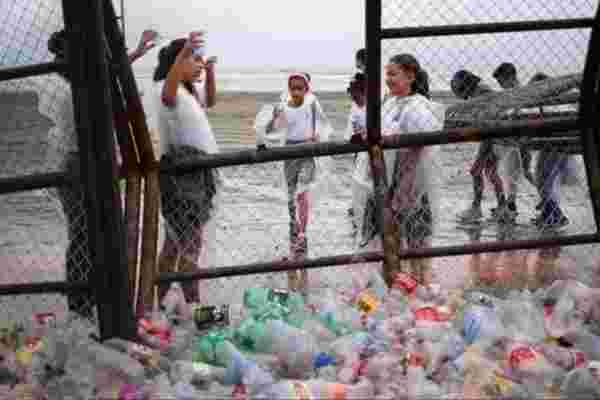
By Kate Whiting , Senior Writer, Formative Content
What goes around comes around. That famous saying about the way we treat others could apply equally to the way we treat the planet.
The plastic waste we see dumped on clogged streets and beaches is one of the most visible examples of human impact on the environment - but now it's coming back to haunt us.
Last summer, the World Health Organization called for an urgent investigation into the health impact of microplastics, after particles were found in drinking water.
The world produces more than 400 million tons of plastics each year, much of which is poorly managed after use - only 14-18% are formally recycled and more than half end up in landfills.
58003
In 2010, Brazil produced approximately 12 million tons of plastic , the world's fourth largest producer behind China, the US and Germany. At the same time, a study found that 7.2% of plastic waste in Latin America and the Caribbean was "poorly managed" - either being thrown away or improperly disposed of, meaning that it is more likely to ended up in the ocean.
plastic mismanaged worldwide by regions / Image: Our world in data
"If it is difficult to ensure that materials that still have market value return to industry as raw material, what about worthless waste?" Brammer, a 2019 Schwab Social Innovator of the Year, told The Hindu .
"It ends up in garbage dumps or even a landfill, where it remains for years, hardly ever being used."
Brammer created Boomera to find new ways to revive value and reuse hard-to-recycle waste products that typically end up in landfills, such as disposable diapers, cigarette butts, and coffee pods. The result is post-consumer recycled material (pCR).
The boomera is an amalgam of "boomerang" and "woomera", two Australian aboriginal artifacts, one that returns when thrown and the other a spear that lands with precision.
It is literally a revolutionary circular economy business that brings together industry, academia and environmental actors, and also involves research and development, product design and reverse logistics.
To date, it has found solutions for large companies such as procter & Gamble, Adidas, and Nestlé.
For Nescafé's Dolce Gusto , Boomera found a way to recycle the pods to create a new type of plastic resin, which now makes up up to 15% of the material in the capsule packaging trays.
If a product / container does not have a technical recycling solution, it is taken to the Boomera circular engineering laboratory at the Mauá Technological Institute in São paulo to test and analyze different recycling routes.
"Once the technical recycling of the material is solved, we develop the reverse logistics system that works best with waste," says Brammer.
Boomera's 'Circularpack' methodology / Image: Boomera
In partnership with Dow , Boomera works with a network of recyclers' cooperatives throughout Brazil to collect waste material, bringing work to those communities.
In another project, schools collected waste drink cartons , which were recycled into musical instruments.
" We need to turn what would be junk into a real business ," says Brammer.
版权及免责声明:凡本网所属版权作品,转载时须获得授权并注明来源“融道中国”,违者本网将保留追究其相关法律责任的权力。凡转载文章,不代表本网观点和立场。
延伸阅读
版权所有:融道中国